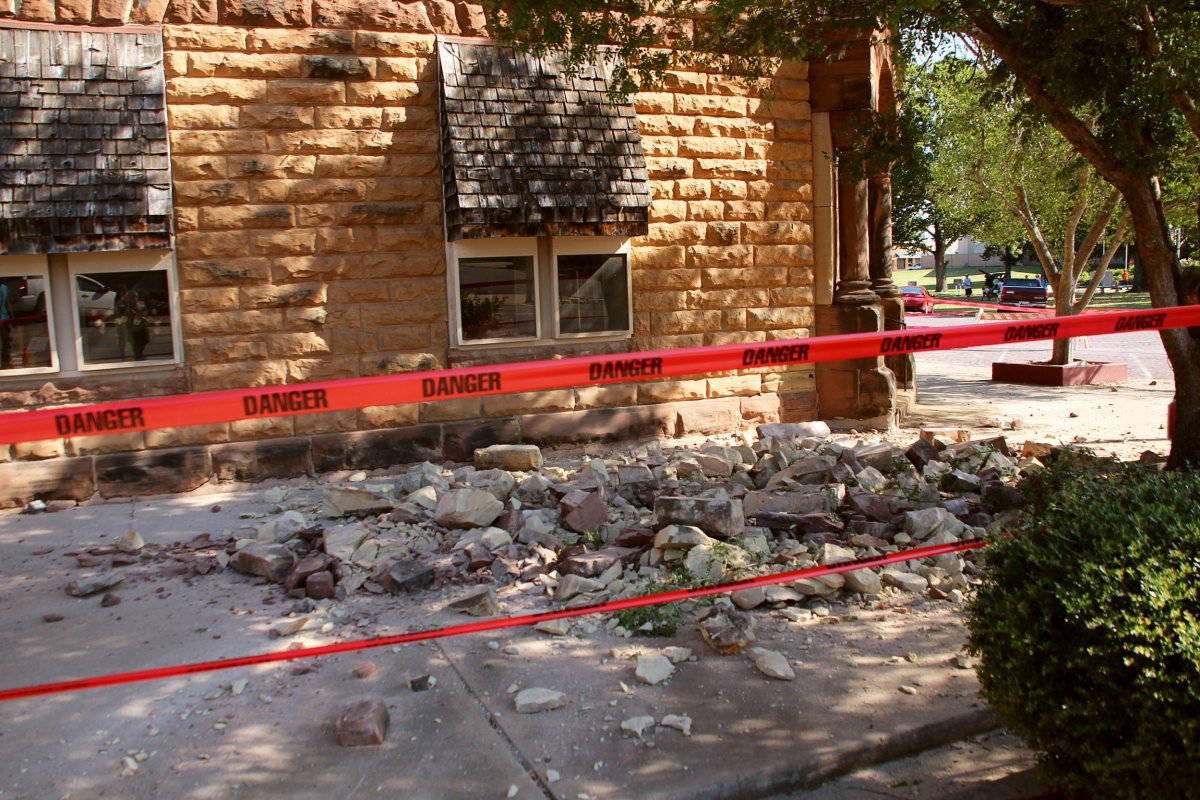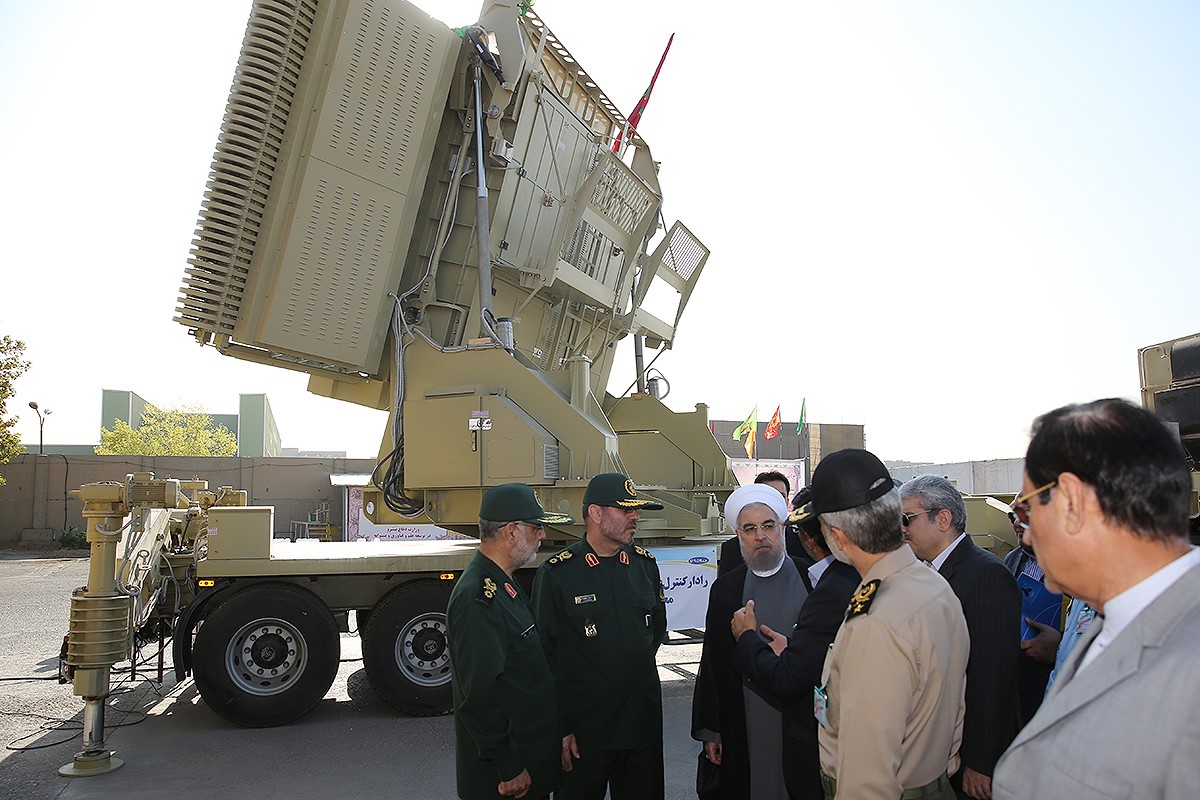Fracking may have led to one of the most powerful earthquakes to strike South Korea since records began, scientists believe. On November 15, 2017, a 5.5 magnitude earthquake rocked the city of Pohang. The quake and its aftershocks injured at least 82 people and damaged thousands of buildings at a cost in the tens of millions of dollars.
If this link is borne out by further research, researchers write in a paper published this week in Science, the earthquake could be a "game-changer" for the geothermal energy industry.
Fracking—a popular term for "hydraulic fracturing"—involves drilling deep boreholes into the ground and injecting large volumes of highly pressurized liquid. It's a process often used to crack into rocks containing natural gas, but in this case, fracking was used to harness geothermal energy. Liquid is pumped into hot rocks deep underground that already contain water. This increased flow forces out searing fluid and steam, which companies use to generate geothermal energy.
Earthquake Was Close to the Fracking Site
In this case, engineers injected hundreds of thousands of cubic feet of liquid into boreholes some 2.5 miles deep. Fracking took place from early 2016 to September 2017. Two months later, the major Pohang earthquake struck. The main quake and its largest aftershocks all took place within 1.2 miles of the fracking site. They were also less than a mile shy of an induced earthquake that took place in April 2017 during an underground stimulation operation.
Earthquakes—natural and induced—produce seismic waves that researchers can track with monitoring stations at the Earth's surface or buried deep underground. In this study, researchers used publically available seismic data to understand the Pohang quake. The data show that the main quake and 46 aftershocks that struck over the next two weeks all occurred between 2 and 4 miles underground. Natural seismic events are usually—but not always—deeper. The Pohang shocks were grouped around the depth of the fracking injections.

Satellite evidence adds to the picture, showing that the main shock moved the surface of the earth upward by almost 2 inches. The fault—which was unknown by the team before the quake—is called a reverse fault, meaning that it dips into the Earth at a steep angle, the crustal block on its upper side moving upward. This is the first time a reverse-faulting earthquake has been recorded in this area, which was not previously known for its seismic activity.
Read more: Earthquake rattles Iran's only nuclear power plant
Injections can lead to earthquakes for two main reasons, study co-author Rob Westaway, a senior research fellow at the University of Glasgow, told Newsweek. First, he said, the injected liquid can act as a lubricant to a geological fault, making it more likely to slip. This process can take time to result in seismic activity as liquid seeps through the rock. Second, extra fluid can add more load on one side of a fault, increasing the force and pushing the two sides in opposite directions.
In 1993, U.S. seismologists Scott Davis and Cliff Frohlich published a number of criteria for assessing whether an earthquake was natural or induced. The Pohang earthquake, Westaway said, meets four of the six criteria. The epicenter and the depths of the quakes are near the injection boreholes, for example.
"An Extraordinary Coincidence"

The results, however, are not conclusive. Two criteria have yet to be met. One is a solid explanation for the two-month time delay between the end of injections and the earthquake. Westaway and colleagues are investigating the possibility that chemical reactions between the injected liquid and minerals in the rock caused it to dissolve. This might weaken the fault, making it more likely to slip.
Although the link remains unproven, the close proximity of the fracking site—in both depth and horizontal separation—would make a natural earthquake at this time and place "an extraordinary coincidence," Westaway added.
Read more: Oil and gas drilling puts Oklahoma's survival at risk by causing massive earthquakes
In the U.S., Oklahoma has seen thousands of induced earthquakes linked to fracking activity by the oil and gas industry. Although these have transformed the region into something of a seismic hotspot, the earthquakes have largely occurred in areas with a low population density, Westaway explained. Pohang, on the other hand, is a lively city home to some half a million people. The damage caused by a major earthquake in a country without earthquake-ready architecture and where earthquake insurance is uncommon is potentially extreme.
Fracking Practices Can Be Improved
But, in spite of this, it's not a simple case, that geothermal fracking is definitively bad and should be halted immediately, Westaway argued. Choosing better spots to inject liquid, for example, might help reduce the risks of the procedure.
"If you try injecting at a particular pressure and nothing happens, then you've either got to inject at a higher pressure or give up," Westaway explained. In this case, the engineers chose the former option, and this may have led to the earthquake, he added. Instead, companies could be more selective with their injections. Think of it like pinning a poster to a wall. If you can't get a pin in the right place by hand, it's probably best to find a new bit of wall. "If you stick with the first place, get a huge hammer and whack the drawing pin really hard, you may put the poster up," Westaway added. "But in the process you might damage the wall."
Technology to help contain rock fracturing might also improve safety. Companies fracking shale rock for natural gas have developed tech to seal off parts of boreholes, Westaway explained. This kind of technology could reduce unwanted rock fracturing, but it's not easy to transfer from the shale field. The temperatures needed for geothermal fracking, he said, would damage the shale technology.
A better understanding of the effects of fracking is also crucial. A standard formula predicts the potential amount of energy that fracking might release, according to the volume of liquid injected and other variables. Pohang—if fracking is the cause—blows that equation out of the water. The earthquake released something like 1,000 times the energy experts would expect from the volume injected.
This latest research is just one piece of the Pohang 2017 puzzle. A number of papers are set to be released this year addressing the question of the earthquake's cause. Another paper published simultaneously in Science draws similar conclusions from geophysical and geological evidence.
It makes sense to presume, for now at least, that fracking was behind the Pohang earthquake, Westaway told Newsweek. The implications definitive proof could have for the industry, on the other hand, are harder to predict.
Uncommon Knowledge
Newsweek is committed to challenging conventional wisdom and finding connections in the search for common ground.
Newsweek is committed to challenging conventional wisdom and finding connections in the search for common ground.
About the writer
Katherine Hignett is a reporter based in London. She currently covers current affairs, health and science. Prior to joining Newsweek ... Read more
To read how Newsweek uses AI as a newsroom tool, Click here.








